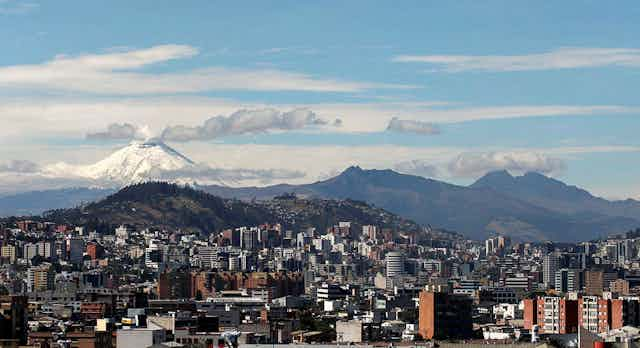As the global population grows from seven to nearly ten billion by 2050, we will need to build the equivalent of a city of one million people every five days to house them.
The world already has ten cities with more than 20 million inhabitants, including Tokyo (37 million), Beijing (21 million), Jakarta (30 million) and New Delhi (25 million). Out of the seven billion people in the world, 6.7 billion live with pollution above WHO clean air standards.
By 2050, around 12 million people from 23 cities in East Asia alone will be at risk from coastal inundation. Planning for climate change will be critical to minimise risk to these areas.
These are just some of the stark facts about our global urban future.
With these issues in mind, up to 50,000 participants have gathered in Quito this week to discuss a New Urban Agenda at Habitat III – the United Nations Conference on Housing and Sustainable Urban Development.
The adoption of the agenda will set standards for sustainable development with a strong emphasis on social inclusion, cultural diversity, urban prosperity, urban governance, urban spatial development, and integrated urban planning including climate change.
From Paris to Quito
The Paris agreement on climate change will come into effect in November 2016. Cities will be at the heart of achieving its aim to limit global warming to less than 2°C. Planning for a low-carbon and resilient urban future is now our greatest global challenge. It is critical to achieving emission reduction targets and planning cities for climate change.
After all, cities produce 76% of carbon dioxide emissions and account for 75% of energy use worldwide.
The focus is now on implementing the Paris agreement; that is where the New Urban Agenda, proposed for agreement at UN Habitat III, comes into play. Key issues being discussed include affordable housing, urban transport, gender equity, empowerment of women and girls, poverty, and hunger in all its forms. Involving communities in the future and design of cities is essential. Better urban governance of our growing cities and urban regions is a core theme.
Observing the range of activities here at Habitat III, it is impressive to see the significant engagement of the private sector as well as governments and NGOs. This mix of partnerships is vital if we are to make positive change in the planning of our cities. Global companies are present as well as local consultancies. They can clearly see there is a market for them in more sustainable futures. This brings great hope for the future.
The scientists are less happy, and are seeking greater engagement in future discussions. In the latest issue of Nature, the commentary says “Scientists must have a say in the future of cities” and argues that they should have been more involved in the Habitat III processes. Clearly, better connecting scientists with planners with communities is important in finding sustainable solutions.
A key component in improving city planning is sharing knowledge and expertise. Cities are often connected through global urban networks such as C40, a network of megacities advocating for action on climate change, and the International Council for Local Environmental Initiatives.
Another important strategy being presented is improving the sharing of knowledge and expertise between “like climate regions”. It is equally important to improve communication of the major urban challenges with wider audiences.
Researchers with the United Nations University developed an art strategy as part of the preparatory process for Habitat III, with the intention of stimulating thought and discussion on health and well-being in cities.
The overall message from UN Habitat III is that the sustainable planning and design of our cities and human settlements is fundamental to improving the health and well being of our urban communities and acting on climate change. Through that, we tackle the stark facts of urban pollution, our response to climate change, and the future liveability of our cities.
Our moment to act
We are living in a unique time for cities, with multiple UN agendas coming together at once: the UN Sustainable Development Goals, the Paris climate agreement, Sendai Framework for Risk Reduction and the Small Island Developing States Partnerships Framework.
National urban policies are seen as crucial to implementation of all these agreements. As the New Urban Agenda states:
the persistence of multiple forms of poverty, growing inequalities, and environmental degradation remain among the major obstacles to sustainable development worldwide.
Through better urban governance, we can make significant inroads to address the ongoing barriers to achieving more sustainable cities. The proposed agenda particularly highlights transportation and mobility as a priority to support action.
Habitat III offers an opportunity to raise global understanding of the enormous challenges facing cities, and a platform for nations to collaborate in developing more sustainable urban futures. This will require considerable effort from everyone.

